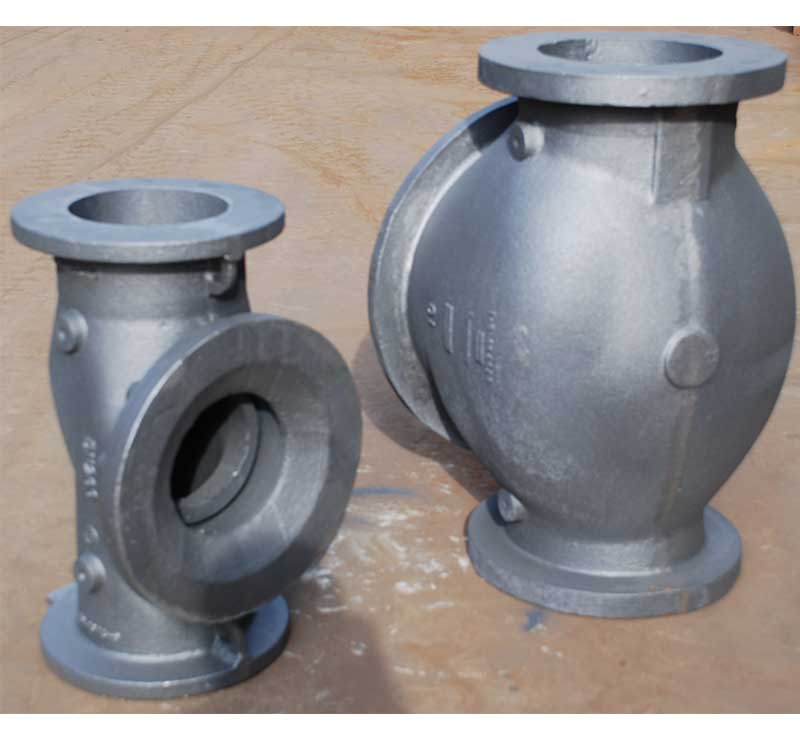+86 311 85258258
+86 311 85258258
Apr. 22, 2020
According to different heating and cooling conditions, the main heat treatment methods of steel castings are annealing, normalizing, homogenizing treatment, quenching, tempering, solution treatment, precipitation hardening, stress relief treatment, and hydrogen removal treatment.
1. Annealing: Annealing is a heat treatment process in which the metal casting is heated to a temperature of 20 to 30 ° C above Ac3 for a certain period of time and cooling. The purpose of annealing is to eliminate columnar crystals, coarse equiaxed grains, Wei's structure and dendritic segregation in the cast structure to improve the mechanical properties of the cast steel. The microstructure of the carbon steel after annealing: the hypoeutectic cast steel is ferrite and pearlite, the eutectoid cast steel is pearlite, and the hypereutectoid cast steel is pearlite and carbide. Suitable for all grades of steel castings.
2. Normalizing: Normalizing is a heat treatment process in which the OEM castings parts are heated to a temperature of 30 to 50 ° C above Ac3 temperature to make them completely austenitized and then cooled in still air. The purpose of normalizing is to refine the microstructure of the steel to have the required mechanical properties and to be a preparatory treatment for subsequent heat treatment. There are two differences between normalizing and annealing processes: one is that the normalizing heating temperature is higher; the other is that the normalizing cooling is faster. The normalized cast steel has a slightly higher strength than the annealed cast steel, and its pearlite structure is finer. General engineering carbon steel and some thick and complex alloy steel castings are mostly normalized. Normalizing can eliminate the reticulated carbide in eutectoid cast steel and hypereutectoid steel, to facilitate spheroidizing annealing; it can be used as a preparatory treatment for medium carbon steel and alloy structural steel before quenching to refine grains and uniformity. Tissue, thereby reducing defects in the casting during quenching.

Oem Machining Parts
3. Quenching: quenching is a heat treatment process in which the OEM machining parts are heated to austenitization (Ac. or Ac• or more) and cooled in an appropriate manner after a certain period of time to obtain a martensite or bainite structure. Commonly, there are water quenching, oil quenching, and air quenching. After the steel castings are quenched, they should be tempered in time to eliminate the quenching stress and obtain the required comprehensive mechanical properties.
The main parameters of the quenching process of steel castings:
(1) Quenching temperature: The quenching temperature depends on the chemical composition of the cast steel and the corresponding critical temperature point. In principle, the quenching temperature of the hypoeutectic cast steel is Ac. Above 20 to 30 ° C often referred to as complete quenching. Eutectoid and hypereutectoid cast steel in Ac. The above 30 ~ 50 ° C quenching, the so-called subcritical quenching, or two-phase zone quenching. This kind of quenching can also be used for hypereutectoid steel, and the obtained structure is finer than that of general quenching and is suitable for toughening treatment of low alloy steel castings.
(2) Quenching medium: The purpose of quenching is to obtain a complete martensite structure. For this reason, the cooling rate at which the casting is quenched must be greater than the critical cooling rate of the cast steel. Otherwise, the martensite structure and its corresponding properties cannot be obtained. However, too high a cooling rate tends to cause deformation or cracking of the casting. In order to meet the above requirements at the same time, the appropriate quenching medium should be selected according to the material of the casting, or other cooling methods (such as grading cooling, etc.) should be used. The isothermal transformation rate of supercooled austenite in the interval of 650-400 °C is the fastest, so the casting should be quenched to ensure rapid cooling at this temperature. It is desirable to cool slowly below the Ms point to prevent quenching deformation or cracking. Quenching media usually use fire, water, oil, and air. In the case of fractional quenching or isothermal quenching, hot oil, molten metal, molten salt or molten alkali is used.
PREVIOUS: Common Heat Treatment Process for Steel Castings (Part 2)
NEXT: Service